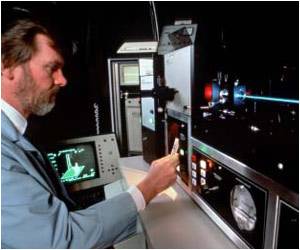Nanopores that are heated selectively can help doctors diagnose diseases more effectively, say researchers.

The team at the National Institute of Standards and Technology (NIST), Wheaton College, and Virginia Commonwealth University (VCU) has pioneered work on the use of nanopores-tiny chambers that mimic the ion channels in the membranes of cells-for the detection and identification of a wide range of molecules, including DNA.
Ion channels are the gateways by which the cell admits and expels materials like proteins, ions and nucleic acids. The typical ion channel is so small that only one molecule can fit inside at a time.
Previously, team members inserted a nanopore into an artificial cell membrane, which they placed between two electrodes.
With this setup, they could drive individual molecules into the nanopore and trap them there for a few milliseconds, enough to explore some of their physical characteristics.
"A single molecule creates a marked change in current that flows through the pore, which allows us to measure the molecule's mass and electrical charge with high accuracy," Joseph Reiner, a physicist at VCU who previously worked at NIST said.
Advertisement
A goal of the team's work is to differentiate among not just several types of molecules, but among the many thousands of different proteins and other biomarkers in our bloodstream.
Advertisement
So the team expanded their measurement capability by attaching gold nanoparticles to engineered nanopores, "which provides another means to discriminate between various molecular species via temperature control," Reiner said.
Source-ANI









